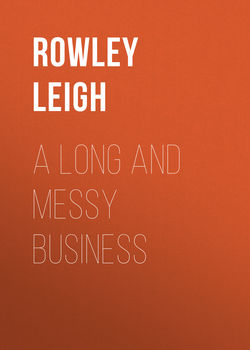Читать книгу A Long and Messy Business - Rowley Leigh - Страница 38
На сайте Литреса книга снята с продажи.
ОглавлениеPretty as a Picture
Castelfranco Salad with Pears and Blue Cheese
We have become familiar not just with the deep maroon
colours of radicchio but also with the asperity of its taste.
While there are even more bitter members of the endive
family (cicoria and puntarella come to mind) radicchio is
still quite a shock to the novice palate and used sparingly
in those salad mixes so beloved of supermarkets.
I am not a fan of those bags of salad. Unless we are
talking about mesclun – the Niçoise mix of various leaves
picked in infancy, with an intense, herby flavour – I am a
one-leaf sort of man. I do not want a salad to be a marriage
of texture and dressing; I want to acknowledge the delicate
flavour of a buttery lettuce heart, or a crisp, mildly bitter
Cos (a.k.a. Romaine) or the full-on milky bitterness of
an endive. I use a fresh head of lettuce and prepare it –
washing and spinning – for the occasion and the dish. No
leaf incarcerated in a plastic bag for several days can
possibly compare.
There is also an aesthetic involved. No one could ignore
the splendour of a whole curly endive with a snow -white
core, radiating out to primrose yellow, then a deep, coarse
green exterior, all splayed out like an unruly mop.
However, the most beautiful salad, the real looker, must
be the radicchio di Castelfranco, more prosaically entitled
the Castelfrank, or speckled endive.
The varieties of radicchio are named after their place of
origin: Chioggia being the most familiar, round-headed
radicchio beloved, apparently, of Tony Blair, while Treviso
produces the elongated maroon and white striped bulbs
that have become increasingly popular, as well as their
extraordinary offspring, the hydroponically forced tardivo
with its tendrils arising from a single core. Castelfranco is
an elegant little town some forty kilometres inland from
Venice, famous not just for its beautiful salad but also as
Giorgione’s birthplace, master of the pittura senza disegno
(‘picture without drawing’).
As with all radicchios, you can cook Castelfranco.
Quartered and coloured in oil and butter, then stewed with
a pinch of sugar, a jigger of lemon juice and a glass of red
wine, it is an excellent accompaniment to steak or roast
lamb, but it seems a bit of a shame not to show its leaves in
all their raw splendour. The recipe below, I have to admit,
tastes just as good when made with an escarole or Batavia
lettuce, but would be just a little senza pittura.
58
